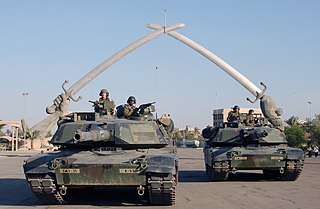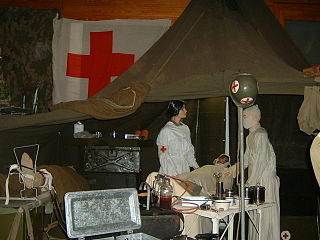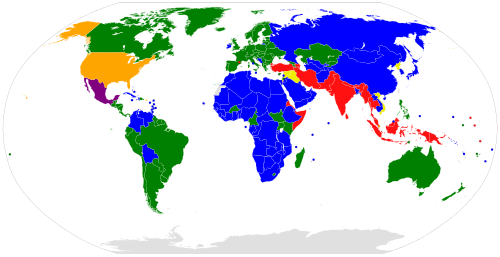
A civilian casualty occurs when a civilian is killed or injured by non-civilians, mostly law enforcement officers, military personnel, rebel group forces, or terrorists. Under the law of war, it refers to civilians who perish or suffer wounds as a result of wartime acts. The term is generally applied to situations in which violence is committed in pursuit of political goals. During periods of armed conflict, there are structures, actors, and processes at a number of levels that affect the likelihood of violence against civilians.
A civilian is a person not a member of an armed force nor a person engaged in hostilities.

An unlawful combatant, illegal combatant or unprivileged combatant/belligerent is a person who directly engages in armed conflict in violation of the laws of war and therefore is claimed not to be protected by the Geneva Conventions. The International Committee of the Red Cross points out that the terms "unlawful combatant", "illegal combatant" or "unprivileged combatant/belligerent" are not defined in any international agreements. While the concept of an unlawful combatant is included in the Third Geneva Convention, the phrase itself does not appear in the document. Article 4 of the Third Geneva Convention does describe categories under which a person may be entitled to prisoner of war status. There are other international treaties that deny lawful combatant status for mercenaries and children.

The law of war is the component of international law that regulates the conditions for initiating war and the conduct of hostilities. Laws of war define sovereignty and nationhood, states and territories, occupation, and other critical terms of law.

Combatant is the legal status of a person entitled to directly participate in hostilities during an armed conflict, and may be intentionally targeted by an adverse party for their participation in the armed conflict. Combatants are not afforded immunity from being directly targeted in situations of armed conflict and can be attacked regardless of the specific circumstances simply due to their status, so as to deprive their side of their support.

Non-combatant is a term of art in the law of war and international humanitarian law to refer to civilians who are not taking a direct part in hostilities; persons, such as combat medics and military chaplains, who are members of the belligerent armed forces but are protected because of their specific duties ; combatants who are placed hors de combat; and neutral persons, such as peacekeepers, who are not involved in fighting for one of the belligerents involved in a war. This particular status was first recognized under the Geneva Conventions with the First Geneva Convention of 1864.

The Third Geneva Convention, relative to the treatment of prisoners of war, is one of the four treaties of the Geneva Conventions. The Geneva Convention relative to the Treatment of Prisoners of War was first adopted in 1929, but significantly revised at the 1949 conference. It defines humanitarian protections for prisoners of war. There are 196 state parties to the Convention.

United Nations Security Council resolution 446, adopted on 22 March 1979, concerned the issue of Israeli settlements in the "Arab territories occupied by Israel since 1967, including Jerusalem". This refers to the Palestinian territories of the West Bank, East Jerusalem and the Gaza Strip as well as the Syrian Golan Heights.

Military occupation, also called belligerent occupation or simply occupation, is the temporary control exerted by a ruling power's military apparatus over a sovereign territory that is outside of the legal boundaries of that ruling power's own sovereign territory. The controlled territory is then known as the occupied territory, with the ruling power being the occupant. Occupation is distinguished from annexation and colonialism on the basis that it is a power structure that the ruling power intends to keep in place only temporarily. In many cases, the occupant may establish a military government to facilitate the administration of the occupied territory, though this is not a necessary precondition for occupation to take place.
International humanitarian law (IHL), also referred to as the laws of armed conflict, is the law that regulates the conduct of war. It is a branch of international law that seeks to limit the effects of armed conflict by protecting persons who are not participating in hostilities and by restricting and regulating the means and methods of warfare available to combatants.

Protocol I is a 1977 amendment protocol to the Geneva Conventions concerning the protection of civilian victims of international war, such as "armed conflicts in which peoples are fighting against colonial domination, alien occupation or racist regimes". In practice, Additional Protocol I updated and reaffirmed the international laws of war stipulated in the Geneva Conventions of 1949 to accommodate developments of warfare since the Second World War (1937–1945).

Protocol II is a 1977 amendment protocol to the Geneva Conventions relating to the protection of victims of non-international armed conflicts. It defines certain international laws that strive to provide better protection for victims of internal armed conflicts that take place within the borders of a single country. The scope of these laws is more limited than those of the rest of the Geneva Conventions out of respect for sovereign rights and duties of national governments.

The Geneva Convention on Prisoners of War was signed at Geneva, July 27, 1929. Its official name is the Convention relative to the Treatment of Prisoners of War, Geneva July 27, 1929. It entered into force 19 June 1931. It is this version of the Geneva Conventions which covered the treatment of prisoners of war during World War II. It is the predecessor of the Third Geneva Convention signed in 1949.

War can heavily damage the environment, and warring countries often place operational requirements ahead of environmental concerns for the duration of the war. Some international law is designed to limit this environmental harm.
Distinction is a principle under international humanitarian law governing the legal use of force in an armed conflict, whereby belligerents must distinguish between combatants and protected civilians. Combatant in this instance means persons entitled to directly participate in hostilities and thus are not afforded immunity from being directly targeted in situations of armed conflict. Protected civilian in this instance means civilians who are enemy nationals or neutral citizens outside of the territory of a belligerent power.
Air warfare must comply with laws and customs of war, including international humanitarian law by protecting the victims of the conflict and refraining from attacks on protected persons.

The Geneva Conventions are international humanitarian laws consisting of four treaties and three additional protocols that establish international legal standards for humanitarian treatment in war. The singular term Geneva Convention colloquially denotes the agreements of 1949, negotiated in the aftermath of the Second World War (1939–1945), which updated the terms of the two 1929 treaties and added two new conventions. The Geneva Conventions extensively define the basic rights of wartime prisoners, civilians and military personnel; establish protections for the wounded and sick; and provide protections for the civilians in and around a war-zone.

Protected persons is a legal term under international humanitarian law and refers to persons who are under specific protection of the 1949 Geneva Conventions, their 1977 Additional Protocols, and customary international humanitarian law during an armed conflict.
The prohibition of torture is a peremptory norm in public international law—meaning that it is forbidden under all circumstances—as well as being forbidden by international treaties such as the United Nations Convention Against Torture.
In international humanitarian law and international criminal law, an indiscriminate attack is a military attack that fails to distinguish between legitimate military targets and protected persons. Indiscriminate attacks strike both legitimate military and protected objects alike, thus violating the principle of distinction between combatants and protected civilians. They differ from direct attacks against protected civilians and encompass cases in which the perpetrators are indifferent as to the nature of the target, cases in which the perpetrators use tactics or weapons that are inherently indiscriminate, and cases in which the attack is disproportionate, because it is likely to cause excessive protected civilian casualties and damages to protected objects.














